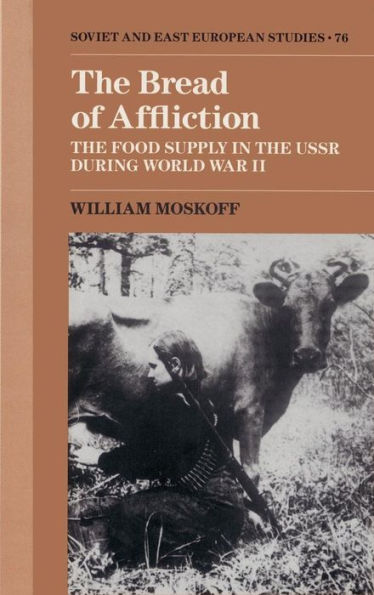The Bread of Affliction: The Food Supply in the USSR during World War II
This book tells how the Soviet Union fed itself after the invasion by the Germans during World War II. The author argues that central planning became much less important in feeding the population, and civilians were thereby forced to become considerably more self reliant in feeding themselves. A rationing system was instituted soon after the war began, but quickly became irrelevant because of the chronic food shortages. The breakdown in central supplies of food was accompanied by the diminished importance of the ruble, which in many places was replaced by bread and clothing as the medium of exchange. Although the Soviet army was given high precedence over civilians, the author also shows that the population living under German occupation was much worse off than were Soviet civilians living in the rear. In addition to extensive use of American and German archives from the war period, the author interviewed more than thirty Soviet emigrés who survived the war.
1120516444
The Bread of Affliction: The Food Supply in the USSR during World War II
This book tells how the Soviet Union fed itself after the invasion by the Germans during World War II. The author argues that central planning became much less important in feeding the population, and civilians were thereby forced to become considerably more self reliant in feeding themselves. A rationing system was instituted soon after the war began, but quickly became irrelevant because of the chronic food shortages. The breakdown in central supplies of food was accompanied by the diminished importance of the ruble, which in many places was replaced by bread and clothing as the medium of exchange. Although the Soviet army was given high precedence over civilians, the author also shows that the population living under German occupation was much worse off than were Soviet civilians living in the rear. In addition to extensive use of American and German archives from the war period, the author interviewed more than thirty Soviet emigrés who survived the war.
125.0
In Stock
5
1

The Bread of Affliction: The Food Supply in the USSR during World War II
274
The Bread of Affliction: The Food Supply in the USSR during World War II
274Hardcover
$125.00
125.0
In Stock

Product Details
| ISBN-13: | 9780521374996 |
|---|---|
| Publisher: | Cambridge University Press |
| Publication date: | 10/26/1990 |
| Series: | Cambridge Russian, Soviet and Post-Soviet Studies , #76 |
| Pages: | 274 |
| Product dimensions: | 5.98(w) x 9.02(h) x 0.75(d) |
| Age Range: | 3 Months |
From the B&N Reads Blog
